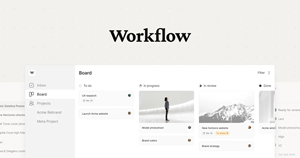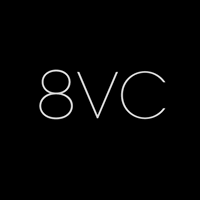Workflow: The AI Revolutionizing Creative Collaboration
November 14, 2024, 3:34 pm

Location: United States, California, San Francisco
Employees: 201-500
Founded date: 2012
Total raised: $329M
In a world where creativity is both an art and a science, Workflow emerges as a beacon of innovation. This London-based startup has recently secured €2.8 million (approximately $3 million) in pre-seed funding, a testament to its potential in transforming the creative landscape. The funding round was led by Venrex, with notable contributions from 8VC and other seasoned investors.
Workflow is not just another productivity tool; it’s a lifeline for design, marketing, and product teams. Imagine a bustling creative studio. Designers are juggling multiple projects, marketers are racing against deadlines, and everyone is trying to maintain quality. Enter Workflow, a centralized hub that streamlines task management, organizes digital assets, and simplifies the review process. It’s like having a personal assistant who understands the nuances of creativity.
The platform leverages artificial intelligence to scan creative work, offering constructive feedback on brand consistency, accessibility, design best practices, and even spelling and grammar. It’s akin to having a panel of experts at your fingertips, ready to provide insights that elevate your work. With integrations into popular design software like Figma and Adobe Creative Cloud, Workflow seamlessly fits into existing workflows, saving precious time.
The demand for creative output is skyrocketing. Last year, more photographs were generated than ever taken by human photographers. This explosion of content raises a critical question: What infrastructure is needed to manage this unprecedented volume? Workflow aims to answer that.
One of the significant challenges in the creative process is issue-checking. Unlike writing, where tools like Grammarly exist, creative work often lacks such automated support. This tedious task is still done manually, consuming valuable time. Workflow identifies this gap and steps in as a solution. It’s not just about checking for errors; it’s about enhancing the creative process. The founders envision AI as a partner, not a replacement.
To develop its AI reviewer, Workflow’s team engaged deeply with creatives. They mapped out the bottlenecks in the review process. Dyslexic and non-native English speakers benefit from spell-checks, while junior designers seek guidance on best practices. Marketers in regulated industries need legislative checks to ensure compliance. Each user has unique needs, and Workflow aims to address them all.
The founders, Will Taylor, Allis Yao, and Paul Sangle, bring a wealth of experience to the table. Taylor, who previously led a company acquired by Broadlake Private Equity, recognized the productivity gaps in creative tools. Yao, with a background at Instagram, understands the importance of efficient workflows. Sangle’s expertise in product development rounds out the team. Together, they are poised to revolutionize how creatives work.
The vision extends beyond mere productivity. Workflow aims to automate routine tasks, such as identifying hard-to-spot errors. This automation shortens feedback cycles, allowing teams to focus on high-level ideas rather than getting bogged down by minor mistakes. Soon, creatives may even be able to review work for regulatory compliance and advertising standards, bringing critical information directly to their fingertips.
The funding secured will propel Workflow’s development, particularly its AI-powered review system. As creative teams grapple with increasing volumes of digital assets, Workflow positions itself as a steadfast partner. The company has already gained traction with brands, agencies, and top UX/UI design schools, indicating a strong market fit.
Investors see the potential in Workflow’s narrow focus on the creative sector. The demand for creative output is expected to increase 4.5 times by 2030. This growth presents a unique opportunity for Workflow to lead the charge in redefining creative collaboration.
In a landscape where generative technologies are lowering barriers for non-creatives, Workflow serves as a bridge. More than 100 million professionals are now finding creative tasks integrated into their roles. Workflow aims to empower these users just as effectively as it does professional creatives.
As the creative industry evolves, so too must the tools that support it. Workflow is not just keeping pace; it’s setting the standard. The company’s commitment to enhancing quality and streamlining processes positions it as a leader in the creative tech space.
In conclusion, Workflow is more than a software solution; it’s a movement. It embodies the future of creative work, where AI acts as a partner, enhancing human creativity rather than replacing it. As the company continues its journey, it stands ready to support creatives worldwide, ensuring that the art of collaboration flourishes in an increasingly digital world. The canvas of creativity is vast, and with Workflow, the possibilities are limitless.
Workflow is not just another productivity tool; it’s a lifeline for design, marketing, and product teams. Imagine a bustling creative studio. Designers are juggling multiple projects, marketers are racing against deadlines, and everyone is trying to maintain quality. Enter Workflow, a centralized hub that streamlines task management, organizes digital assets, and simplifies the review process. It’s like having a personal assistant who understands the nuances of creativity.
The platform leverages artificial intelligence to scan creative work, offering constructive feedback on brand consistency, accessibility, design best practices, and even spelling and grammar. It’s akin to having a panel of experts at your fingertips, ready to provide insights that elevate your work. With integrations into popular design software like Figma and Adobe Creative Cloud, Workflow seamlessly fits into existing workflows, saving precious time.
The demand for creative output is skyrocketing. Last year, more photographs were generated than ever taken by human photographers. This explosion of content raises a critical question: What infrastructure is needed to manage this unprecedented volume? Workflow aims to answer that.
One of the significant challenges in the creative process is issue-checking. Unlike writing, where tools like Grammarly exist, creative work often lacks such automated support. This tedious task is still done manually, consuming valuable time. Workflow identifies this gap and steps in as a solution. It’s not just about checking for errors; it’s about enhancing the creative process. The founders envision AI as a partner, not a replacement.
To develop its AI reviewer, Workflow’s team engaged deeply with creatives. They mapped out the bottlenecks in the review process. Dyslexic and non-native English speakers benefit from spell-checks, while junior designers seek guidance on best practices. Marketers in regulated industries need legislative checks to ensure compliance. Each user has unique needs, and Workflow aims to address them all.
The founders, Will Taylor, Allis Yao, and Paul Sangle, bring a wealth of experience to the table. Taylor, who previously led a company acquired by Broadlake Private Equity, recognized the productivity gaps in creative tools. Yao, with a background at Instagram, understands the importance of efficient workflows. Sangle’s expertise in product development rounds out the team. Together, they are poised to revolutionize how creatives work.
The vision extends beyond mere productivity. Workflow aims to automate routine tasks, such as identifying hard-to-spot errors. This automation shortens feedback cycles, allowing teams to focus on high-level ideas rather than getting bogged down by minor mistakes. Soon, creatives may even be able to review work for regulatory compliance and advertising standards, bringing critical information directly to their fingertips.
The funding secured will propel Workflow’s development, particularly its AI-powered review system. As creative teams grapple with increasing volumes of digital assets, Workflow positions itself as a steadfast partner. The company has already gained traction with brands, agencies, and top UX/UI design schools, indicating a strong market fit.
Investors see the potential in Workflow’s narrow focus on the creative sector. The demand for creative output is expected to increase 4.5 times by 2030. This growth presents a unique opportunity for Workflow to lead the charge in redefining creative collaboration.
In a landscape where generative technologies are lowering barriers for non-creatives, Workflow serves as a bridge. More than 100 million professionals are now finding creative tasks integrated into their roles. Workflow aims to empower these users just as effectively as it does professional creatives.
As the creative industry evolves, so too must the tools that support it. Workflow is not just keeping pace; it’s setting the standard. The company’s commitment to enhancing quality and streamlining processes positions it as a leader in the creative tech space.
In conclusion, Workflow is more than a software solution; it’s a movement. It embodies the future of creative work, where AI acts as a partner, enhancing human creativity rather than replacing it. As the company continues its journey, it stands ready to support creatives worldwide, ensuring that the art of collaboration flourishes in an increasingly digital world. The canvas of creativity is vast, and with Workflow, the possibilities are limitless.


